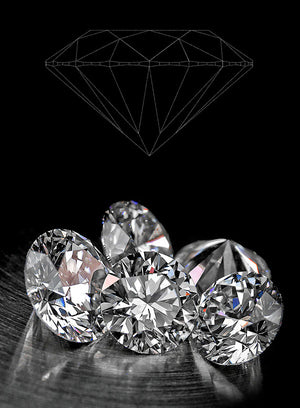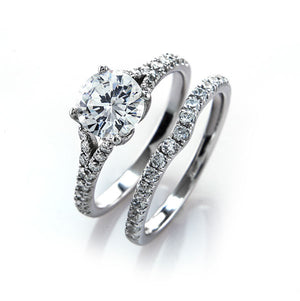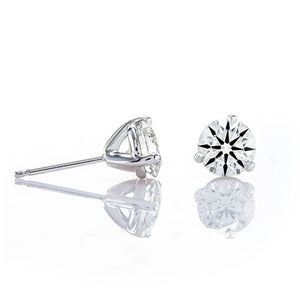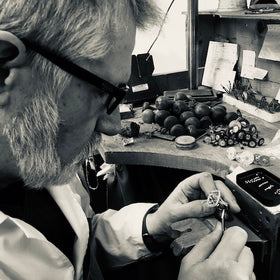
How do you tell if a ring is 14k white gold?
"Please tell me how I can tell whether a ring is 14k white gold. I inherited a bunch of jewelry from my grandmother, I’m pretty sure that the majority of it is real because my grandfather loved her very much and liked to spoil her. The problem is that some of the jewelry looks real, and some of the jewelry looks fake, some of it is stamped, and some of is not, and some of it stamped with things like 14k but followed with other letters that I don’t know the meaning of. I’m not interested in selling any of it, the jewelry holds sentimental value to me, but I also need to figure out the value for estate purposes. What advice can you give me?”
What stamps on gold jewelry represent:
Fine gold jewelry which is stamped with marks such as 10k, 14k, 18k, 22k, and 24k, represent the gold content of the jewelry item. Jewelry which was manufactured in Europe, might be marked with numbers that represent the gold content, such as 585 for 14k gold, and 750 for 18k gold. If the ring is stamped with one of these alloy marks and is white in color, then it is probably white gold, and if it’s yellow in color it is yellow gold. That seems simple and straightforward enough, right? However, there are a lot of other letters and marks which can appear on the inside of the ring shank along with the alloy stamp, and those markings can be confusing and misleading. Here are some of the more popular stamps on the inside of rings that you are likely to encounter:10K, 14K, 18K, 22K, and 24K Gold Jewelry Markings:
14K P (The “P” stands for plumb gold)
18K with a company logo after such as Brian Gavin 18K
417 (10K = 41.7% gold, mixed with other alloys.
585 (14k = 58.5% gold, mixed with other alloys.
750 (18K = 75% gold, mixed with other alloys.
917 (22K = 91.7% gold, mixed with other alloys.
999 (24K = 99.9% gold, as pure as it gets.
If the jewelry which you’ve inherited features any of the gold karat markings listed above, whether accompanied by a hallmark indicating the manufacturer or not, it is most likely real. However it if is stamped with any of the following marks, it is not real gold:14K 1/20 (1/20 gold is basically gold-filled)
14K G.F. = Gold Filled
14K G.P. = Gold Plated
14K H.G.E. = Hydrostatic Gold Electroplate
14K G.E.P. = Gold Electroplate
.925 = Sterling Silver
With exception of the items marked .925, the jewelry stamped with these markings is made out of another type of alloy, and coated with a very thin layer of gold which should show signs of wear given the fact that these are items which your grandmother has worn over the years.An alloy stamp or marking doesn’t guarantee authenticity:
Just because a piece of jewelry is stamped with an alloy mark such as 14k, 18k, or 22k, does not necessarily mean that it is actually real gold. There is a lot of fake, counterfeit jewelry floating around out there, it drives a friend of mine who runs a cash for gold store crazy… He spends the majority of his day using electronic testing devices, and different types of nitric acid to gold test jewelry, and a lot of what is marked, is not real. On the flip side, there is always the chance that jewelry which is not stamped, is made of real silver, gold, or platinum. Not all jewelry manufacturers bother to stamp the alloy content of the jewelry that they produce. For this reason, I recommend consulting with a qualified jeweler in your local area. Ask friends and family members for a referral to a trusted jeweler. The combination of experience handling and evaluating jewelry, combined with common methods of testing gold jewelry for alloy content, should provide you with the answers that you seek in short order.How to test gold to determine whether it is real:
 Credit Kassoy.com
Credit Kassoy.comUsing Acids & Chemicals to Test Whether Gold is Real:
 Credit Kassoy.com
Credit Kassoy.com















